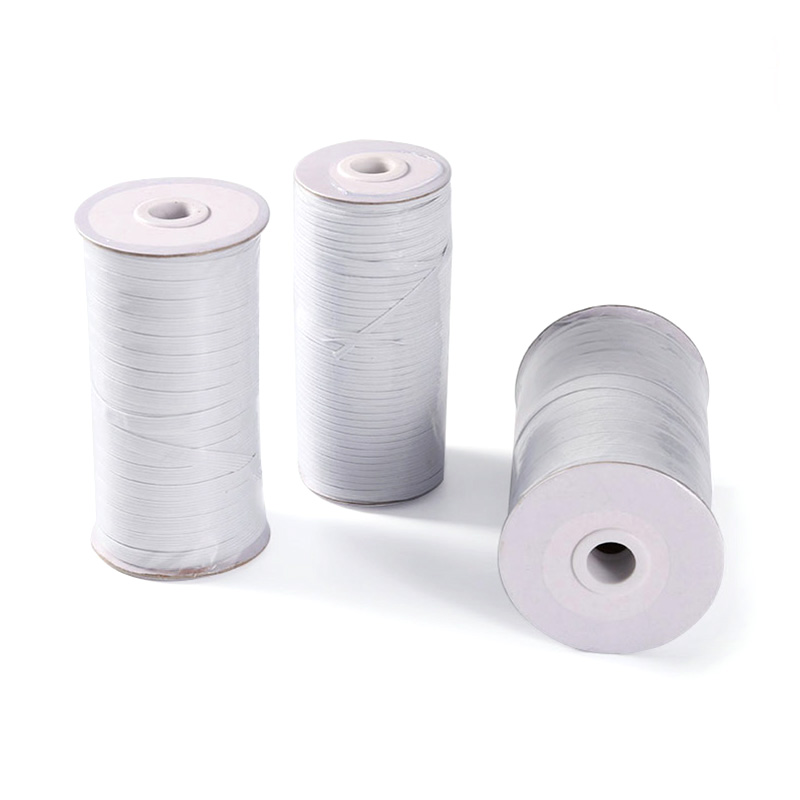Industry
 By Admin
By Admin
How To Store Elastic Bands To Maintain Shape And Elasticity
Elastic bands are widely used across various applications, from clothing and fitness gear to industrial tools. Whether you are dealing with a double elastic waistband for pants, a stretch band for yoga, or even a webbing slings flat belt used for lifting and securing, proper storage is essential to maintain their shape and elasticity over time. Without the right care, elastic materials can lose their stretch, become misshapen, or even break down prematurely. Here, we will explore effective ways to store different types of elastic bands so they remain functional and durable for long-term use.

One of the common elastic products in apparel is the double elastic waistband. This type of waistband is designed to provide added comfort and support in garments like trousers and skirts. However, if stored improperly, the double elastic waistband can lose its stretch and shape, pilot to discomfort or poor fit. To avoid this, it's important to keep these waistbands in a cool, dry place away from direct sunlight. Exposure to heat or UV rays can degrade the elastic fibers, causing them to weaken and stretch out over time. Rolling or folding the double elastic waistband loosely rather than tightly can help prevent permanent creases or deformation.
Similarly, a stretch band for yoga is an essential accessory for many fitness enthusiasts, aiding in flexibility and resistance training. Proper storage of these bands is key to retaining their elasticity and effectiveness. After use, it's recommended to wipe the stretch band for yoga clean of sweat or dirt before storing it. Leaving moisture or grime on the band can cause it to deteriorate faster. Just like with the double elastic waistband, the stretch band for yoga should be stored away from heat sources and sunlight. Hanging the band or laying it flat on a shelf can prevent unnecessary stretching or twisting that may damage the material.
When it comes to industrial or utility applications, webbing slings flat belts are often used for lifting heavy loads or securing cargo. These flat belts rely on their tensile strength and elasticity to function safely and effectively. Storing webbing slings flat belts requires particular attention to avoid chemical exposure or sharp objects that could weaken the fibers. It's advisable to keep webbing slings flat belts in a designated storage area, ideally hung on racks or rolled loosely on shelves to maintain their shape. Avoid folding or creasing the belts as this can create weak points, reducing their lifespan and reliability.
Maintaining the elasticity of any band, whether a double elastic waistband, stretch band for yoga, or a webbing slings flat belt, depends heavily on how it is stored. Temperature control is one of the more important factors. Bad heat or cold can cause the materials to lose their elasticity or become brittle. Many elastics are made from synthetic rubber or polyester blends, which are sensitive to environmental conditions. A controlled environment with moderate temperature and low humidity is ideal for storing all kinds of elastic bands.
It's also important to avoid stretching elastic bands unnecessarily while they are not in use. For example, keeping a double elastic waistband or a stretch band for yoga under constant tension, such as hanging from hooks under strain, can cause permanent deformation. The bands should be kept relaxed in storage. Similarly, webbing slings flat belts should not be stored while under load or tension to prevent fiber damage.
Another practical tip for storage is to keep elastic bands clean and free from oils, lotions, or other chemicals that might degrade their material. Cleaning your stretch band for yoga regularly and allowing it to dry fully before storage can prolong its elasticity. The same goes for a double elastic waistband that comes into contact with sweat or detergents. For webbing slings flat belts, ensuring they are free from dirt and debris after use is critical, especially since these belts often work in tough environments.
If you need to store elastic bands for an extended period, consider using breathable storage bags or containers that prevent dust accumulation while allowing air circulation. Avoid sealed plastic bags that trap moisture, which can damage the elastic fibers in a double elastic waistband, stretch band for yoga, or webbing slings flat belt. Proper labeling of your elastic bands during storage can also help you organize different types and sizes efficiently.
Finally, inspect your elastic bands periodically, even when stored. Check for signs of wear, such as cracks, thinning, or loss of elasticity. Early detection can help you replace or repair bands before they fail in critical use. Whether it's a double elastic waistband in a garment, a stretch band for yoga in your fitness kit, or a webbing slings flat belt for industrial tasks, good storage habits directly impact the durability and performance of these elastic materials.
In conclusion, maintaining the shape and elasticity of your elastic bands requires attention to environmental conditions, cleaning, and careful handling. Keeping double elastic waistband, stretch bands for yoga, and webbing slings flat belt in controlled conditions, free from stress or chemical exposure, will ensure they last longer and function as intended. Proper storage is a simple but effective step toward preserving the quality of your elastic products.



 English
English Español
Español عربى
عربى Tiếng Việt
Tiếng Việt

